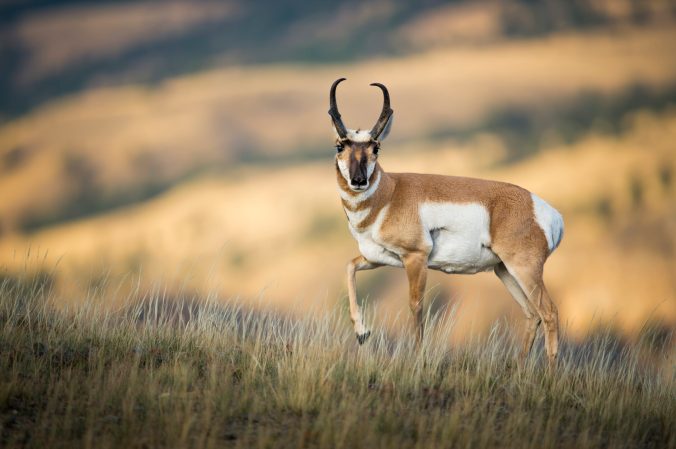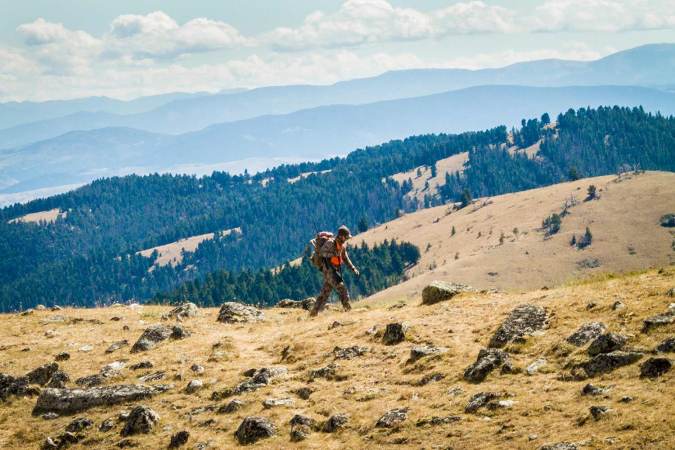If you don’t think road kill can take a bite out of hunters’ opportunity, just ask Bruce Sterling.
Since 1985, the Montana Department of Fish, Wildlife & Parks biologist has counted bighorn sheep that have been killed near Thompson Falls, where US Highway 200 and railroad tracks run between cliffs and a river for about 10 miles.
Sterling has counted nearly 500 bighorn killed in collisions, 84 percent by cars and trucks, the rest by train. During those same decades, FWP issued only 274 ram tags to hunters.
“When you lose that many sheep, it certainly has an impact on hunter opportunity,” he said.
From a hunters’ perspective, road kill is a lose-lose. Wildlife collisions endanger drivers, waste a valuable natural resource, and, at the very least, damage our vehicles.
The good news is Congress is considering investing in wildlife-safe highway crossings that make America’s roads safer for both motorists and wildlife.
While we all notice a road-killed animal bloating on a hot afternoon, the impacts that highways have on long-term population dynamics can be more difficult to track.
Highways with busy traffic and divided medians can create impenetrable barriers for wildlife. Once roads surpass a certain size and traffic level, they effectively block wildlife migrations. This is particularly important out West, where elk, mule deer, and pronghorn might have to roam 150 miles between seasons, to find water, escape high-elevation snow and maximize the value of fresh forage.
All of that impacts the total number of animals that a landscape can support. It also impacts the survivorship and health of mother animals and their young. And all of those factors are important to growing big, healthy adult bucks and bulls.
Busy highways can also block movements of rare, far-roaming animals like grizzly bears that need to move long distances to find mates and spread their genes. Poorly designed culverts can block fish migrating to and from spawning streams.
Across North America, there is growing interest and research showing the benefits of protecting wildlife migration corridors – including placing specially engineered bridges and tunnels to allow wildlife to safely cross roads.
University of Wyoming wildlife biology professor Matthew Kauffman, who has worked to develop technology to map migration corridors of big game herds, says highways are one of many ways human activities can impede wildlife movements. Intensive development for energy, rural subdivisions, and in some cases, fencing are among others.
“For just about every problem along these corridors, we have a tool to keep those segments open for migrating wildlife,” Kauffman said. Making sure the herds can move back and forth between the habitats they need to thrive will require that industry, ranchers, highway engineers, urban planners, sportsmen and biologists work together.
Today, Congress is considering language in the Federal Highway bill that would direct $250 million dollars over five years for modernizing highways with wildlife crossing features. According to the Theodore Roosevelt Conservation Partnership (TRCP), More than 40 sportsmen’s groups signed a letter to congressional leadership in April 2019 asking for a competitive grant program with at least $50 million annually to be directed toward reducing the impacts our roads have on wildlife.
Senators appeared to be listening. The Senate Environment and Public Works Committee passed the highway bill by a 21-0 vote.
“These innovative enhancements to our roads and highway infrastructure should reduce vehicle collisions with wildlife and integrate habitat connectivity into highway planning, so fish and wildlife are not an afterthought,” said Kristyn Brady, of TRCP.
Sterling says roadside technologies have helped reduce collisions with bighorn sheep on that stretch of US 200. Reader-boards warn motorists bighorn sheep are present. Other, more costly technologies, such as specially engineered bridges and tunnels, have proven more effective elsewhere. While such infrastructure isn’t cheap, it lasts for decades, and often pays for itself in terms of reduced vehicle damage, human injuries, and hospitalization costs. Plus, it ensures more robust, resilient wildlife herds.
The value of wildlife should not be dismissed either. The state of Montana has determined that a bighorn ram has a public value of about $30,000. By that math, that one stretch of highway near Thompson Falls has killed millions of dollars of bighorns.
















